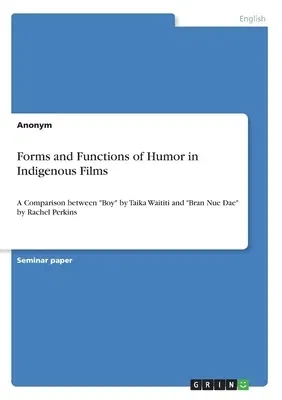Seminar paper from the year 2017 in the subject English Language and
Literature Studies - Culture and Applied Geography, grade: 2,0,
University of Frankfurt (Main), language: English, abstract: This term
paper focuses on the comparison between two Indigenous films, "Boy" by
Taika Waititi and "Bran Nue Dae" by Rachel Perkins on the basis of forms
and functions of humor that are presented in both films. Comparing these
two films, the viewer might immediately ask the question why the
depiction of historical trauma of the two peoples, Māori and Aborigines,
is presented in a comical manner. These films are classified as
"dramedies". It does not mean that a dramedy is a comedy with dramatic
elements or vice versa, it's a genre of drama that is defined by stories
focusing on character development, intense emotions and inner conflict
as the primary source of plot. In these films, humor has been selected
as a main tool to illustrate the problems of these two nations that have
been confronted with social segregation in New Zeeland and Australia.
For this reason, such a tragicomically represented humor serves as a
difficulty for its appropriate perception on the viewers' part. In the
movies, the plot revolves in 1969 in Australia and in 1984 in New
Zealand, so explicitly in the times of the national revival of
Aborigines and Maori. Then, after centuries of discrimination, they were
given full rights and became full-fledged members of society. So, a mix
of tragedy and comedy is not a coincidence since the Indigenous people
who have come through a lot of tragedy had then a reason to cheerfully
celebrate their newly obtained equal status.


